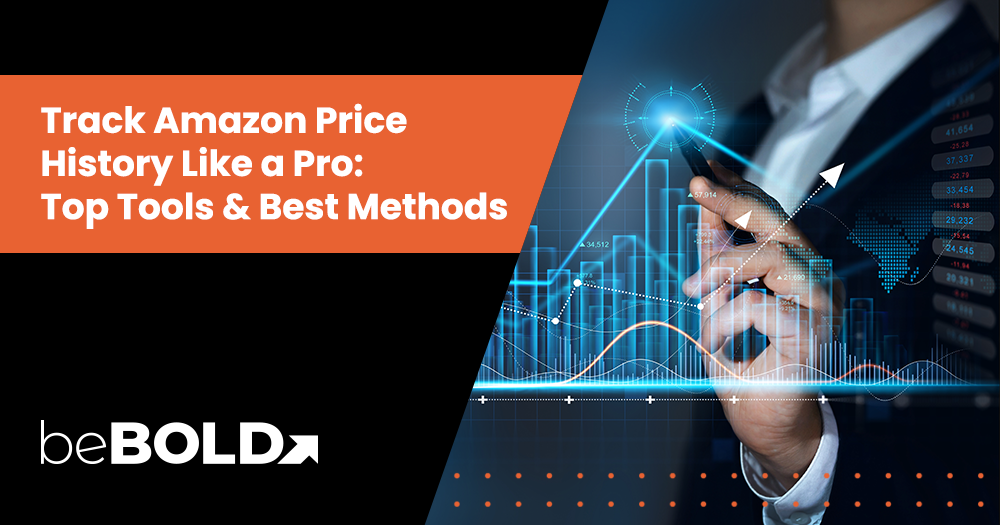Key Summary
- Amazon price history refers to a timeline of how product prices have changed over time, often shown in an Amazon price chart for Amazon, third-party, and used products, sometimes including Buy Box overlays. These tools collect snapshots and send alerts when your target price is reached. 📊
- The fastest ways to view Amazon price history are by installing a browser extension like Keepa, Camelizer, or Trellis to get on-page charts, or by pasting an ASIN/URL into a checker such as CamelCamelCamel or an Amazon price history app like PriceHistory. ⚡
- For sellers and serious analysts, AMZScout provides graphs, fee breakdowns, and sales rank data, while Trellis offers seller analytics alongside price history. Thunderbit is excellent for those who want to set up custom, scheduled scraping to build their own Amazon historical price data sets. 💼
- Since Amazon prices can fluctuate daily, especially during shopping events like Prime Day, price history helps confirm whether a deal is genuine, allows you to time your purchases, and supports sellers in fine-tuning pricing to win the Buy Box. 🎯
- While useful, these tools have limitations such as occasional update delays, varying marketplace coverage, and premium features locked behind paid plans. ⚠️
With the big picture in place, let’s get tactical.

Source: Adobe Stock
If you’ve ever wondered how to check Amazon price history, the best path depends on whether you want a one-click overlay while browsing, or a deeper dashboard for product and competitor analysis. Quick browser add-ons make it easy to see charts while you shop, while dedicated tools provide richer historical views and insights for sellers and researchers. Below are the most common approaches explained in more detail.
Amazon Price History Tracker Extensions
- Keepa — Amazon Price Tracker: This popular Amazon product pricing tracker shows historical charts directly on Amazon product pages. It works across many marketplaces and can send you alerts when prices drop, making it a versatile option for both shoppers and sellers who want to track Amazon price history effectively.
- The Camelizer (by CamelCamelCamel): A lightweight, free browser extension that overlays simple Amazon price chart history. It’s excellent for quick checks and links seamlessly to the main CamelCamelCamel site for alerts and deeper data.
- Trellis Seller Extension: Built with sellers in mind, this extension combines Amazon product price history with insights on sales rank, keyword performance, and listing health. It allows real-time monitoring, which helps brands react faster to competitor moves.
- Amazon Price History Tracker (CCC embed): This tool embeds CamelCamelCamel charts directly into product pages without extra setup, giving casual users a straightforward way to check past prices on Amazon.
Tip: If you mainly shop and just need a sanity check, Camelizer is a great “no-login” starting point. If you sell on Amazon or analyze niches, Keepa or Trellis save hours per week.
Online Price History Checker Sites
If you don’t want to install a browser extension, there are easy-to-use web-based checkers that let you paste in an Amazon link or ASIN and instantly see a product’s historical pricing data. These sites act as an Amazon price history app, making them especially useful for casual users or mobile shoppers who want quick insights without setting up additional tools.
- CamelCamelCamel — Paste any Amazon URL/ASIN to view detailed multi-range price graphs, and set watches for email alerts when your desired price is reached. A great Amazon product pricing tracker for everyday use.
- PriceHistory.app — A web and mobile Amazon pricing history tool that offers charts, price drop alerts, and guidance on whether the current price is a good deal. It’s particularly popular for India-focused marketplaces but works internationally as well.
- BuyRadar (Amazon Price Tracker) — Another online checker option that provides accessible Amazon product price history graphs without extra downloads.
If you’re moving beyond casual checks, consider pro-level tools.
Choosing the Right Price History Tracker
Choosing the right tracker depends on whether you are a casual shopper looking for the best deal or a seller who needs deeper insights for pricing and competition. Think about how often you shop or sell, the level of detail you need, and whether you want simple alerts or full analytical dashboards. Matching the tool to your goals and bandwidth will save time and give you the clearest value.
Advantages of Price History Trackers for Sellers

Source: Adobe Stock
- Win (and keep) the Buy Box: Trackers log the Buy Box price, owner changes, and timing patterns so you can see when (and why) you lose the box. Use this evidence to fine-tune repricing rules, align thresholds with your minimum margin, and capitalize when competitors go out of stock. Pair with fast shipping and inventory health to raise Buy Box share without triggering a race to the bottom.
- Protect margins with data: Historical floors and ceilings reveal where profitability breaks. Set MAP/min-margin guardrails based on actual Amazon historical price data, and test price elasticity by watching how sales rank and conversion shift at different price points.
- Faster market research: Before you source or scale a SKU, scan its Amazon product price history to study stability, volatility, and seasonal dips. Combine price history with seller count and BSR trends to avoid “race-to-the-bottom” niches, validate pack sizes, and forecast realistic ROI after fees.
- Alerts = faster reactions: Configure alerts for Buy Box loss, competitor price drops, or back-in-stock events. Route them to email/Slack and trigger playbooks: pause coupons when the market dives, raise price when competitors are OOS, or increase bids when your target price point returns.
- MAP & brand control: Long-range Amazon product pricing tracker charts help identify recurring violators by timestamp and seller ID. Export timelines to document breaches, inform negotiations, and support gating requests.
Benefits of Price History Tracking for Buyers
- Verify “deal” claims: Compare today’s price to the 30/90-day low and the long-term average to check past prices on Amazon and spot inflated “was-prices.”
- Set & forget with alerts: Create watchlists with target prices for multiple variations. Alerts save you from constant checking and are especially useful for big-ticket items.
- Compare Amazon vs. 3P vs. used: Amazon price history tracker tools let you see how offers vary between Amazon itself, third-party sellers, and used products.
Prices really do move, often daily, and swing hardest around big events like Prime Day and Black Friday, so history is your compass.
Strategies for Identifying Good Deals
Price history isn’t just about seeing numbers on a chart. It's about using those insights to make smarter buying or selling decisions. By studying patterns and combining Amazon historical price data with current promotions, you can uncover real opportunities while avoiding misleading discounts. Here are proven strategies to maximize value:
- Check 30/90-day ranges: Look for repeatable dips across 30- or 90-day periods to better time your purchases or schedule promotional campaigns.
- Stack discounts: Pair natural price dips with coupons, Lightning Deals, or other promotions to unlock outsized savings and boost value.
- Watch seasonality: Many products, like electronics or seasonal items, tend to drop after launch periods or post-season. An Amazon pricing history tool reveals these recurring patterns and helps you plan accordingly.
- Track availability alongside price: Notice how stockouts often trigger sudden price spikes. By monitoring both, sellers can plan inventory levels, and buyers can anticipate when prices may rise.
- Use a coupon/price-check helper (e.g., Honey): Validate whether markdowns are genuine by cross-checking discounts across sellers and platforms.
Treat Amazon product price history like an analytics chart. Repeatable lows, event-driven dips, and stockout spikes are not random. They're signals that can guide better timing and smarter strategy.
Put Data-Driven Analytics to Use With beBOLD Digital
For shoppers, a one-click overlay such as Camelizer or Keepa combined with alerts is a practical way to avoid overspending and make sure you buy at the right time. For brands, going further with tools like AMZScout or Trellis layered over Keepa history, and even Thunderbit for scheduled scraping, turns pricing intelligence into a real competitive advantage. These solutions help you understand seasonality, identify genuine deals, protect margins, and respond to competitors with speed. The through-line is simple: Amazon price history transforms guesswork into strategy and builds confidence in every purchase or pricing move.
If you’re an Amazon brand that wants to put this data to work, beBOLD Digital can help. Our team specializes in leveraging Amazon price history tracker tools like Keepa, AMZScout, and Trellis to optimize pricing, win the Buy Box, and strengthen overall profitability. Don’t leave your pricing decisions to chance. Reach out to beBOLD Digital today and let’s turn insights from Amazon price chart history into sustainable growth.










Comments